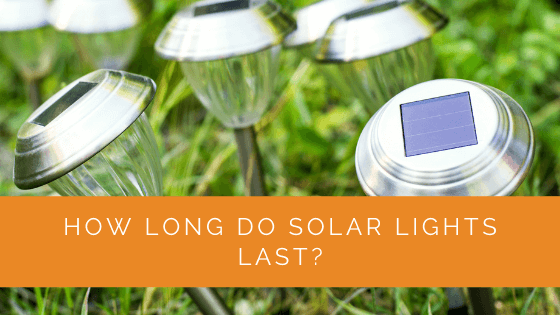Solar lights have become an increasingly popular choice for illuminating homes, gardens, and outdoor spaces, thanks to their eco-friendly nature and cost-effectiveness. However, if you’re considering adding solar lights to your property, you might wonder: How long do solar lights last? In this informative and educational article, we will delve into the lifespan of solar lights, the factors affecting their charge duration, the types of batteries used, and valuable tips to maximise their efficiency. By the end, you’ll clearly understand how to make the most out of your solar lighting investment.
Solar lights offer a sustainable lighting solution that relies on harnessing solar energy during the day and converting it into electrical power for nighttime illumination. With insights into how to maintain and troubleshoot your solar lights, you can ensure they remain a reliable and eco-friendly light source for years to come. So, let’s shed some light on the longevity of solar lights and the best practices to keep them shining brightly.
Contents
- 1 Key Takeaways
- 2 How Long Solar Lights Last Once They Have Been Charged?
- 3 How Long Do Solar Lights Stay Charged?
- 4 How Long Does It Take to Charge Solar Lights?
- 5 What Kind of Batteries Are Used in Solar Lighting?
- 6 How to Keep Your Solar Lights Charged for Longer
- 7 Tips for When Your Solar Lights Stop Working
- 8 Case Study: Maximising the Lifespan of Solar Lights in Residential Settings
- 9 Expert Insights From Our Solar Panel Installers About Solar Lights’ Longevity
- 10 Examples of Solar Lights
- 11 Our Expertise in Solar Lights
- 12 Endnotes
Key Takeaways
- Solar lights have rechargeable batteries that last about four years without replacements, while the lights and LED fixtures can last approximately ten years.
- Fully charged solar lights typically work for about 8 hours, but the duration can vary based on the type of battery and positioning.
- The time required to recharge solar lights entirely ranges from 4 to 12 hours, depending on the type of solar panels and batteries used. Proper positioning, cleanliness, and maintenance are essential for optimal performance.
How Long Solar Lights Last Once They Have Been Charged?
Solar lights are meant to be a long-term investment for your home. A solar light could be placed inside your house, garden, or patio.
Solar-powered lights come with rechargeable batteries that work for about four years without needing any replacements or changes. However, these replacements are only needed by your solar batteries.
The lights and the LED fixtures used to have a lifespan of approximately ten years. You can install a solar light in your home and stay assured that they will not give up on you. Solar lights are generally placed outdoors.
This is because solar lights work with the help of solar energy or sunlight. They come with solar panels attached to them that absorb direct sunlight during the day and convert it into electrical energy. This energy is stored in solar light batteries and then used by solar lights at night.
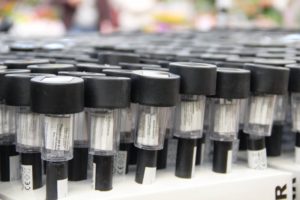
How Long Do Solar Lights Stay Charged?
Once fully charged, solar lights work for about 8 hours at a stretch. This time can also vary depending on the type of battery your solar light is equipped with and its positioning.
Most solar lights also come with automated power on and off switches. When they detect sunlight at dawn, these lights automatically switch off to save energy.
Light sensors automatically turn solar lights on and switch them off so your solar batteries can have a longer lifespan. Solar lights last years before you need to replace or completely change them.
How Long Does It Take to Charge Solar Lights?
The time required for your solar light to recharge depends on the type of solar panels they come with and how you position them. Generally speaking, recharging solar lights takes between 4 to 12 hours.
Even in freezing temperatures and cloudy weather, your lighting needs about 12 hours of sunlight to attain a full charge. Solar lights stay charged for hours even if the intensity of light is not suitable.
The energy absorbed by the solar panels is converted into electricity and is then stored in the solar batteries. The time required to recharge the solar lights also depends on the type of battery used in the product.
What Kind of Batteries Are Used in Solar Lighting?
Solar lights come with different types of batteries that eventually need to be replaced after a particular period. The most common rechargeable batteries found in solar lights are nickel-cadmium batteries or NiCd batteries.
NiCd batteries are rechargeable and durable batteries generally found in solar lights. However, they must be replaced after 2 to 3 years of use to maintain efficiency.
While most people prefer replacing batteries with the same battery type used before, you can switch it up, too. Your light source does not need the same model to run efficiently. You can pick between a variety of choices.
If your solar lights come with NiCd batteries, you could switch them with nickel-metal hydride batteries or NiMH. NiMH batteries are preferred over NiCd batteries as they have a longer shelf life and are more durable.
Solar light batteries come in varying sizes, too. The time they recharge and run varies depending on the model you buy and where you set them up in your home. You are good to go as long as the solar panel has access to sun rays and there is enough sun.
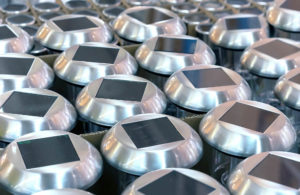
How to Keep Your Solar Lights Charged for Longer
If you are concerned about your solar lights’ battery life, you can take a few steps to keep them charged longer. Solar lighting works indoors and outdoors; if you position them correctly, you can illuminate your home for hours.
Focus on the Positioning
The first thing you need to do is position your solar lights correctly. These lights come with solar panels that need to face the sun to recharge the battery. A solar panel needs to be positioned at an angle facing the sun.
If you are installing solar lights indoors, you can position the solar panels near the windows so that they have access to sunlight. Moreover, solar garden lights can be placed anywhere outside if the solar panel faces the sun.
Make Sure the Solar Panels Are Clean
A solar panel is the only inlet through which sunlight can be absorbed. It would be best to ensure these panels are kept clean and that no dirt or debris is on their surface.
Proper maintenance is essential so that your solar lights are as efficient as possible. Solar lighting devices with their own panels need to be frequently cleaned to work at maximum efficiency.
Make Sure Nothing Is Obstructing the Way
Other factors can also obstruct your solar lighting system besides dust and debris. If you place the panels on the ground, the path of light can get obstructed by a tree or buildings around it.
You must ensure that the path of light between the sun and the panel is not interrupted by anything.
While cloudy days and buildings have little effect on solar LED lights, you should get as much direct sunlight as possible to improve your panel’s efficiency.
Charge Your Battery
Your solar battery needs to be fully charged during the day to run effectively all night. Many LED lights now come with a light sensor that detects the sunlight so that it can begin charging the battery.
This way, you do not have to manually charge the solar panel battery and leave it all to the light sensor.
Cold weather can also affect your battery and how it charges.
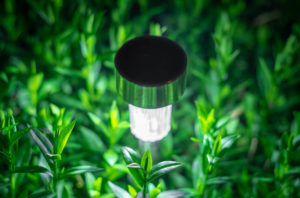
Replace the Battery
No matter how strong you think your solar light battery is, it would be best if you made sure you replace it from time to time. This is because every battery has a lifespan generally shorter than your LED light’s lifespan.
If you do not change a bad battery regularly, no matter how much solar power the panels absorb, your lights will not last very long.
Your lighting systems are only as efficient as their panels and battery. So make sure you invest in their maintenance regularly.
Keep Them Away From Street Lighting
A light sensor will detect street lights and stop working at night. It would be best if you positioned the panel so that these streetlights do not shed their light on it. The solar cells need to be away from artificial light so that the battery conserves as much energy as possible.
Tips for When Your Solar Lights Stop Working
Solar lights can be used in many ways for your house lighting. However, most people do not know much about these lights and discard them if they stop working.
Solar lights are easily fixable; generally, when they stop working, there is nothing wrong with them. The next time you face any difficulty with your solar lights, you can try using these techniques to fix them quickly.
Check the Manual Switch
While most solar lights now come with a light sensor, they still have manual switches. You must check if these light switches are turned on. If they are manually switched off, the light sensor will not be able to power on your lighting system effectively.
Make Sure There Is No Pull Tab on the Battery
Many new solar lights come with a tab on the battery. These tabs prevent light energy from being converted and stored in the battery. So, make sure you check the battery unit properly before you discard a malfunctioning solar light system.
Test the Light Yourself
You can test the solar light system on your own to see if the panel has a problem. The best way to do this is by covering the solar panel to see if the light switches on and testing for damaged panels. The sensors detect all light sources and even detect light in poor weather conditions.
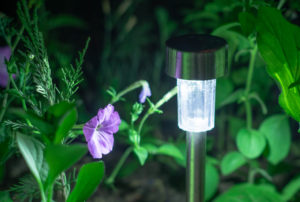
Clean the Panel
Maintenance like cleaning the panels is crucial if you want your solar products to get sufficient charge. You can clean the panel’s surface by taking a cloth and wiping the surface. This way, it will be free of debris and obstructions, and you can keep your lights clean.
Use a Regular Battery
If you want to test the quality of the battery, you can remove the rechargeable products from the battery slot and replace them with a regular battery. If the solar lights start working again, you know the problem is in the battery and not the panels.
Switch It Off for a While
Switching it off for a while is an excellent way to make sure your solar lighting starts working again. You can switch off the main power and let the battery reach full capacity. Then, you can switch the solar lights on after 72 hours to see if they work again.
Reach Out for Professional Help
If nothing else works, you can reach out for professional help. Many of these slights come with a warranty period. Therefore, you can always get them replaced if they stop working.
Additionally, there are customer service helplines that help you with solar power. If the problem does not require a replacement, they can simply walk you through the solution so your lights work again.
Case Study: Maximising the Lifespan of Solar Lights in Residential Settings
Background
At Solar Panels Network, we have consistently observed that homeowners seek long-term, eco-friendly lighting solutions for their outdoor spaces. Solar lights, which harness solar energy, are increasingly popular due to their sustainability and cost-effectiveness. However, understanding how to maintain these lights to maximise their lifespan is crucial.
Project Overview
We recently worked with a client who had installed solar lights throughout their garden and driveway. While initially satisfied, the client noticed a decline in the lights’ brightness and operational hours. They sought our expertise to understand and resolve these issues, aiming to enhance the longevity and performance of their solar lighting system.
Implementation
Identified Issues and Solutions:
- Battery Replacement: The client’s solar lights used NiCd batteries, which had reached the end of their lifecycle.
- Solution: We recommended replacing them with NiMH batteries, known for their longer shelf life and efficiency.
- Panel Positioning: Some solar panels were partially shaded, reducing their ability to charge the batteries fully.
- Solution: We advised repositioning the panels to areas with maximum sunlight exposure and trimming overhanging branches.
- Panel Maintenance: The solar panels had accumulated dust and debris, obstructing sunlight absorption.
- Solution: Regular cleaning was recommended to ensure optimal energy capture.
Steps Taken:
- Battery Replacement: NiMH batteries were installed in all solar lights, ensuring a longer operational period and improved energy storage.
- Panel Repositioning: Panels were strategically positioned to avoid shadows from trees and buildings, maximising sunlight exposure.
- Cleaning Regimen: A cleaning schedule was established to maintain panel efficiency, with guidance on using appropriate cleaning agents.
Results
The client experienced a significant improvement in the brightness and operational duration of their solar lights. The lights now provided consistent illumination throughout the night, even on days with less sunlight. The use of NiMH batteries extended the lights’ operational lifespan, reducing the frequency of battery replacements. Additionally, proper panel positioning and regular cleaning maintained optimal energy absorption, ensuring the lights’ efficiency.
Summary
This case study demonstrates that proper maintenance, including battery replacement and panel positioning, can significantly enhance the lifespan and performance of solar lights. At Solar Panels Network, we emphasise the importance of regular maintenance and informed choices, such as selecting the right battery type and ensuring optimal placement of solar panels. By adopting these practices, homeowners can enjoy long-lasting, eco-friendly lighting solutions that provide consistent illumination and contribute to reduced energy costs. Our commitment to educating clients on best practices ensures they can fully benefit from their investment in solar lighting, enjoying both environmental and financial advantages.
Expert Insights From Our Solar Panel Installers About Solar Lights’ Longevity
Solar lights are an excellent investment for long-term outdoor lighting. The key to maximising their lifespan is maintaining the solar panels and regularly checking the batteries. Proper care can extend the functionality of these lights well beyond their standard lifespan.
Senior Solar Engineer
Choosing the right battery type is crucial for the longevity of solar lights. NiMH batteries, for example, offer better durability and efficiency compared to NiCd batteries, making them a preferred choice for sustained performance.
Lead Solar Technician
Positioning solar panels correctly is fundamental. Ensuring they receive adequate sunlight without obstructions like trees or buildings will significantly enhance the lights’ efficiency and lifespan.
Solar Installation Specialist
Examples of Solar Lights
- Solar String Lights: https://www.solarpanelsnetwork.com/blog/best-solar-string-lights/
- Solar Shed Lights: https://www.solarpanelsnetwork.com/blog/best-solar-shed-lights/
- Solar Driveway Lights: https://www.solarpanelsnetwork.com/blog/best-solar-driveway-lights/
- Solar Indoor Lights: https://www.solarpanelsnetwork.com/blog/best-solar-indoor-lights/
- Solar Hanging Lights: https://www.solarpanelsnetwork.com/blog/best-solar-hanging-lights/
Our Expertise in Solar Lights
At Solar Panels Network, we’re here to provide you with valuable information and support regarding solar lighting. With our experience and understanding of the solar lighting industry, our team of experts is prepared to assist you in finding the right lighting solution for your needs. Whether you’re interested in improving your outdoor spaces, conserving energy, or adopting a more sustainable approach, we’re well-equipped to help. Please feel free to contact us with any questions or inquiries.
Endnotes
Purchasing solar lights is an eco-friendly solution to artificial light. This is one of the best artificial light sources you can invest in for your home. The light output of your solar lights depends on the kind of battery and its quality.
If you keep the battery in good shape and invest in its maintenance, you can expect solar lighting hours to increase in your homes significantly. With solar lights, you can save money, do your bit for the environment, and take advantage of its many benefits!
About the Author
Solar Panels Network stands at the forefront of solar energy solutions, driven by a team of seasoned solar engineers and energy consultants. With over decades of experience in delivering high-quality solar installations and maintenance, we are committed to promoting sustainable energy through customer-centric, tailored solutions. Our articles reflect this commitment, crafted collaboratively by experts to provide accurate, up-to-date insights into solar technology, ensuring our readers are well-informed and empowered in their solar energy decisions.

